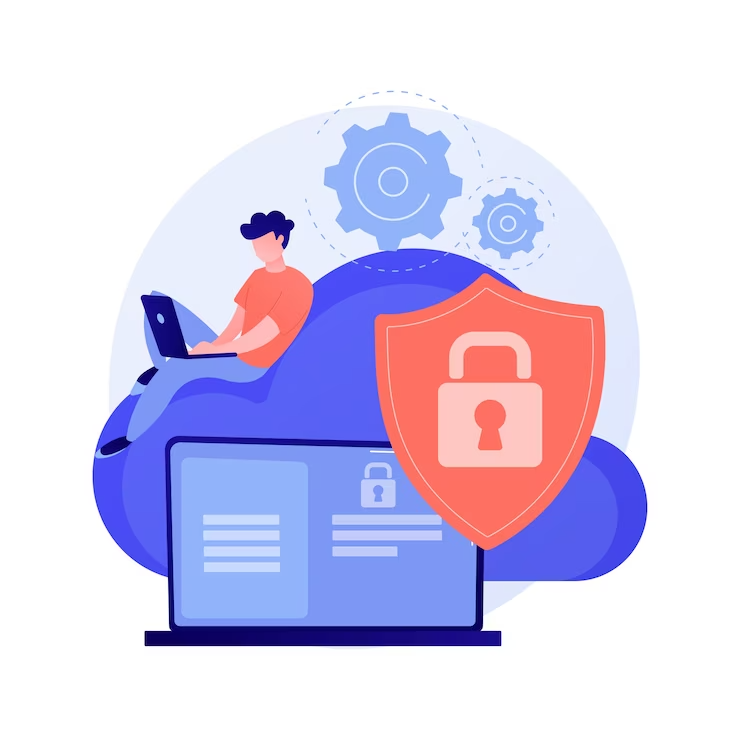Not implementing robust security measures could lead to devastating consequences, exposing your company’s sensitive data and leaving it vulnerable to nefarious actors.
By being proactive about protecting your sensitive data, you can protect yourself from being subject to potential hacks.
Let’s cover the main risks to your intranet, why it’s essential to have foolproof intranet security and the best practices for protecting your company’s sensitive data.
What is an intranet?
An intranet is a private network within an organization designed to facilitate communication, collaboration, and information sharing among employees. It often includes tools like file sharing, team messaging, and document management systems — helping to streamline workflows and enhance productivity.
Intranets can be hosted on-premises or in the cloud. Different intranets offer various levels of customization and control, meeting a company’s specific needs. Secure intranets are essential for protecting sensitive information and maintaining a safe digital workplace.
Why do you need a secured intranet?
Picture this: it’s a typical Monday morning, and your employees log in to your company’s intranet to access their work files, only to find that the system has been compromised. Critical files are locked, sensitive data has been stolen, and your organization’s reputation is on the line.
This scenario is more common than you might think.
In 2023 and beyond, your intranet security is vital for protecting sensitive data, maintaining operational efficiency, adhering to regulations, and more.
As we previously mentioned, the average cost of a data breach was near the 10-figure mark in 2022. And while these data breaches result in large financial losses, they also come with a longer-term cost — your reputation. If your clients, investors, and partners can’t trust you with sensitive data, they might look elsewhere for a company that can.
Second, maintaining operational efficiency is crucial. A secure intranet ensures that your employees have uninterrupted access to the tools and information they need to perform their jobs effectively. Cyberattacks can disrupt business operations, costing valuable time and resources to recover from the incident.
Additionally, compliance with industry regulations is necessary. Many industries like healthcare, finance, and retail, must adhere to strict data privacy and security regulations. Failing to comply with these regulations can result in hefty fines, legal action, and more damage to your company’s reputation. A secured intranet helps ensure that your organization meets the required standards and maintains compliance.
Lastly, fostering a secure digital workplace promotes a culture of trust and responsibility. When employees know that their organization prioritizes intranet security, they feel more confident in their ability to communicate and collaborate safely. This trust leads to a more engaged and productive workforce, ultimately benefiting your company’s bottom line.
How has intranet security evolved as solutions move from on-premise to cloud?
In 2023, it may seem trivial to reminisce about how all files were stored on paper rather than in the cloud. But the same is happening with intranet security.
More companies are opting for third-party hosted infrastructure rather than keeping data on-premise. This movement allows for enhanced security but also enhances methods of attack.
In the cloud, data encryption and advanced threat detection technologies have become increasingly important to protect sensitive information.
Moreover, organizations now rely on the expertise of cloud providers, who offer advanced security features and dedicated resources to ensure a secure and reliable intranet experience for their clients.

What are the main security risks on an intranet today?
Many of us often forget that our intranet security lies on both the interior and exterior of our organizations. Unfortunately, many of the risks and vulnerabilities associated with intranet security are internal factors.
Most risks are internal
According to Verizon, research revealed nearly 34% of 2019 data breaches involved internal actors.
And, one of the main channels of sensitive information is via email. In 2019, a staggering 94% of malware attacks were carried out through email, making it a popular method for cybercriminals to gain access to your network and steal confidential data.
Once inside your intranet, hackers can access information like financial records, customer data, and intellectual property leading to severe consequences for your organization.
To effectively secure your sensitive information, businesses must employ a multi-layered approach to intranet security. Encompassing data encryption, access control, and employee training top the list of measures.
External risks: on-premise vs. cloud
Organizations also face external threats to their intranet security. The nature of these risks can vary depending on whether your intranet is hosted on-premise or in the cloud.
Although on-premise security is less common than it used to be, vulnerabilities still exist. Natural disasters, equipment failures, and physical breaches top the list of risks associated with on-premise solutions.
Conversely, cloud-based intranets rely on third-party providers to host and manage their infrastructure. While this can offer cost savings and scalability, it also introduces new security challenges.
For instance, you must trust your provider to protect your data and maintain robust security measures on their end. Cyber security becomes more prevalent and is in your provider’s hands.
What are the essential components of intranet security?
Securing your intranet is like protecting a castle from invaders. The castle has multiple layers of defense including a moat, drawbridge, and guards. Similarly, your company’s intranet requires a multi-layered security approach to fend off cyber threats.
Identity and Access Management (IAM)
IAM plays a pivotal role in ensuring that only authorized users get access to critical information. It involves managing user identities, ensuring proper authentication, and controlling access to resources.
By implementing a robust IAM system, you help secure your systems by monitoring user activity, keeping unauthorized users out, and giving access where necessary. This way, you safeguard sensitive data and maintain a secure digital workplace.
Data security
In intranet security, your data security is a top priority after IAM. Although all intranet security providers offer data encryption, you want to choose one that goes above and beyond. Using strong encryption methods like secure sockets layer (SSL), transport layer security (TLS), and advanced encryption standard (AES) help keep your data away from prying eyes.
Additionally, remember to back up your data. Regular backups are essential for strong data security. By doing so, you’ll minimize risks, maintain a strong defense, and keep your digital workplace secure.
Multi-factor authentication (MFA)
MFA adds an extra layer of security, reducing unauthorized access to your SaaS intranet. By requiring users to provide two or more verification factors, you can ensure that only authorized individuals gain entry.
For instance, combining passwords with one-time codes sent to a user’s mobile device makes it harder for hackers to break through. Additionally, you can use biometrics or security tokens that act as personalized gates to sensitive information.
Secure information and event management
SIEM solutions monitor and analyze user activity, access patterns, and system events within the intranet environment. This continuous monitoring helps detect unusual behavior or suspicious patterns that could indicate a security breach or an attempt to compromise the system.
A cloud intranet security provider will help your organization meet compliance requirements, automate incident response, and keep your tools in a centralized location.
Let’s cover the best practices.

What are the best practices for intranet security?
Most successful intranet security attacks will be internal, meaning that you can prepare and address security threats to ensure they don’t happen.
Regular software updates and patching
If you use a SaaS or cloud-based provider, one of the benefits is that they will take care of software security and patching for you.
If you use on-premise infrastructure, you’ll have to consistently update hardware and software to ensure the security of your sensitive information.
Setting up an intranet security policy
Developing an intranet security policy is essential for establishing a strong security posture within your organization. The policy should detail the guidelines, procedures, and responsibilities that every employee must adhere to in order to maintain a secure environment. Begin by assessing risks and identifying potential threats, both internal and external.
Then, define access controls by establishing roles and permissions to limit access to sensitive information based on employee roles and responsibilities. Implement data protection measures, such as encrypting data in transit and at rest, and establish backup and recovery plans. Clearly outline procedures for reporting and responding to security incidents, and make sure to review and update the policy regularly.
Employee training and awareness
Building employee awareness and providing training are crucial components of intranet security since many threats begin internally. Employees should also be educated on how to recognize phishing attacks, as these often target them directly. Training your employees positively affects your IAM.
Encourage strong password practices, including the use of complex passwords and multi-factor authentication. Finally, emphasize the importance of reporting suspected security incidents promptly and maintaining open lines of communication between employees and the IT team.

What should you look at when choosing your intranet solution?
When selecting an intranet solution, consider these key factors:
- Functionality
- Security
- Ease of use
- Scalability
Different organizations likely have different needs. You’ll want to ensure that the solution you choose includes collaboration tools, document management, or search capabilities. Additionally, prioritize robust security features including data encryption, access control, and regular updates.
If you plan on your business growing consistently, you’ll want to ensure you choose a provider with scalability. And once you determine what your company’s needs are, you can compare costs, customer support offerings, and integration capabilities.
Final thoughts
In the twenty-first century, advancements in technology have revolutionized business. Things that weren’t even imagined 30 years ago are commonplace now. Unfortunately, that also means the digital landscape has never been more hazardous.
Today, there are more threats to your business than ever before. Securing your digital workplace is a crucial responsibility for organizations of all sizes.
By understanding the risks, implementing essential security components, and following best practices, you can protect sensitive information and maintain a safe and productive environment for your employees.
For a comprehensive guide to creating a secure intranet tailored to your company’s needs, download our free whitepaper. Take the first step towards safeguarding your company’s digital assets.


